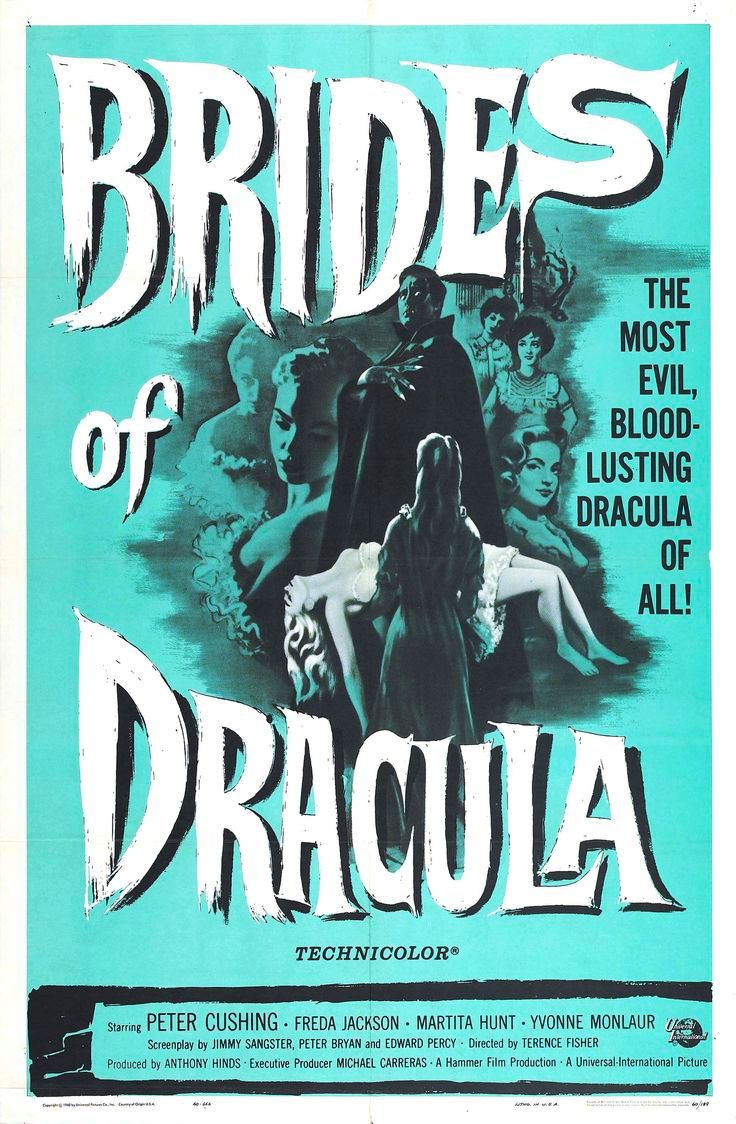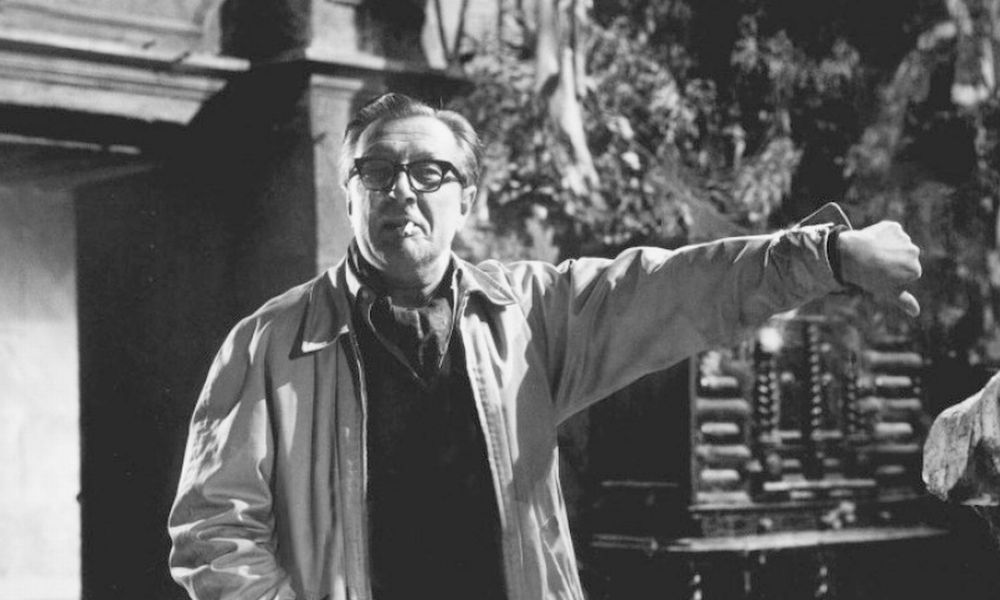"Fisher's directorial style included a strong focus on character, and his films are always marked by an authoritative division between good and evil, with a preference for historical settings… Once seen as an unimaginative and conservative filmmaker, he is now lauded for his accomplished, professional approach to the horror film." - The Movie Book, 1999
Terence Fisher
Director
(1904-1980) Born February 23, London, England
(1904-1980) Born February 23, London, England
Key Production Country: UK
Key Genres: Horror, Costume Horror, Gothic Film, Creature Film, Drama, Mystery, Thriller, Romance, Crime Thriller, Supernatural Horror, Psychological Thriller, Science Fiction
Key Collaborators: Bernard Robinson (Production Designer), Peter Cushing (Leading Actor), Christopher Lee (Leading Actor), James Bernard (Composer), Anthony Hinds (Producer/Screenwriter), Jack Asher (Cinematographer), Jimmy Sangster (Screenwriter), Michael Carreras (Producer), Anthony Nelson Keys (Producer), Walter J. Harvey (Cinematographer), Alfred Cox (Editor), Maurice Rootes (Editor)
Key Genres: Horror, Costume Horror, Gothic Film, Creature Film, Drama, Mystery, Thriller, Romance, Crime Thriller, Supernatural Horror, Psychological Thriller, Science Fiction
Key Collaborators: Bernard Robinson (Production Designer), Peter Cushing (Leading Actor), Christopher Lee (Leading Actor), James Bernard (Composer), Anthony Hinds (Producer/Screenwriter), Jack Asher (Cinematographer), Jimmy Sangster (Screenwriter), Michael Carreras (Producer), Anthony Nelson Keys (Producer), Walter J. Harvey (Cinematographer), Alfred Cox (Editor), Maurice Rootes (Editor)
"Began directing in 1940s, mainly comedies and romantic dramas (So Long at the Fair, 1950), then specialised in horror subjects (mainly for Hammer Films) which earned him considerable reputation in France… Fisher skilfully uses colour, design and graphic 'blood' effects to create atmosphere, although his films hardly rival the more reticent, slyly witty approach of James Whale and others in the 1930s." - John Gillett (The International Encyclopedia of Film, 1972)
"From 1957, he was the principal director of Hammer Film's neo-Gothic horrors, making twenty-four of them in sixteen years. Sometimes stylish, they were mostly garish and predictable. Before being caught in the Hammerlock, he made a far scarier film So Long at the Fair (co-directed by Anthony Darnborough 1950) with Jean Simmons searching for her brother who mysteriously disappears during the 1899 Paris Exposition." - Ronald Bergan (A-Z of Movie Directors, 1983)

Dracula (1958)
"Criticised by some British critics of the time for being 'disgusting' and by others for lacking the expressionist touches of European horror or the Universal cycle of the 1930s, Fisher's technique is, as Robert Murphy describes, 'almost pedantically disciplined'. The camera follows the action with a realistic restraint which gives a cool objectivity to the sexual fantasies, body horrors and oedipal nightmares which are being enacted." - John Caughie (Encyclopedia of European Cinema, 1995)
"Fisher received very little critical attention throughout his career. Ironically, as that career ended, the publication in 1973 of A Heritage of Horror, David Pirie's book-length study of the British horror film, led to a re-appraisal of his work. Since that time, Fisher has come to be seen as a major British film director, especially so far as his horror films are concerned, and as someone who embodies the virtues of a popular British genre cinema. It is still the case, however, that Fisher's pre-horror work has not received the critical attention it merits." - Peter Hutchings (BFI Screen Online)
"Fisher worked for Hammer as early as 1953 on its two modest science fiction ventures, Four-Sided Triangle and Spaceways. From 1957 onward, he was effectively incarcerated in the neo-Gothic product. There are some who rate his achievement there very highly. Paul Willemen has referred to Fisher’s films as "a major example of what a truly creative artist can achieve within the limits of an ostensibly sensational and popular genre.” My own feeling is that anyone with a studio’s resources and some twenty films ought to have established his talent more clearly. We celebrate Val Lewton for less, Tod Browning on much less evidence. Fisher’s films are rich in color and setting, but not as vividly imaginative as Roger Corman’s pictures." - David Thomson (The New Biographical Dictionary of Film, 2010)
"Fisher, who worked for horror-specialists Hammer for most of his career, was notable for the narrative and visual restraint he brought to potentially sensationalist material. He tended mostly to avoid shock-cutting and close-ups, preferring to create an unsettling atmosphere through decor and brooding colours (he particularly favoured saturated blacks, blues and reds)… Fisher was never an adventurous, innovative or profound film-maker, but to a genre often considered disreputable, he brought welcome intelligence, sobriety and pictorial elegance." - Geoff Andrew (The Director's Vision, 1999)
“Of the directors primarily associated with the heyday of Hammer Films, Terence Fisher has the strongest claim for auteur status. A late bloomer who trained as an editor and was well into his forties before he made his first feature, Fisher was 52 when he directed Hammer's hugely successful The Curse of Frankenstein (1957), shot in lurid Eastmancolor with soon-to-be paragons of British horror, Christopher Lee and Peter Cushing, in their first onscreen paring.” - Jessica Winter (The Rough Guide to Film, 2007)
Selected Filmography
{{row.titlelong}}
Terence Fisher / Fan Club
David Pirie, Kiyoshi Kurosawa, Chris Fujiwara, Martin Scorsese, Filipe Furtado, Ricardo Bedoya, Alan Jones, Christoph Huber, Nicolas Barbano, Carlos Garcia Brusco, Ramon Freixas, Joe Kane.
David Pirie, Kiyoshi Kurosawa, Chris Fujiwara, Martin Scorsese, Filipe Furtado, Ricardo Bedoya, Alan Jones, Christoph Huber, Nicolas Barbano, Carlos Garcia Brusco, Ramon Freixas, Joe Kane.
"Fan Club"
These film critics/filmmakers have, on multiple occasions, selected this director’s work within film ballots/lists that they have submitted.
These film critics/filmmakers have, on multiple occasions, selected this director’s work within film ballots/lists that they have submitted.


